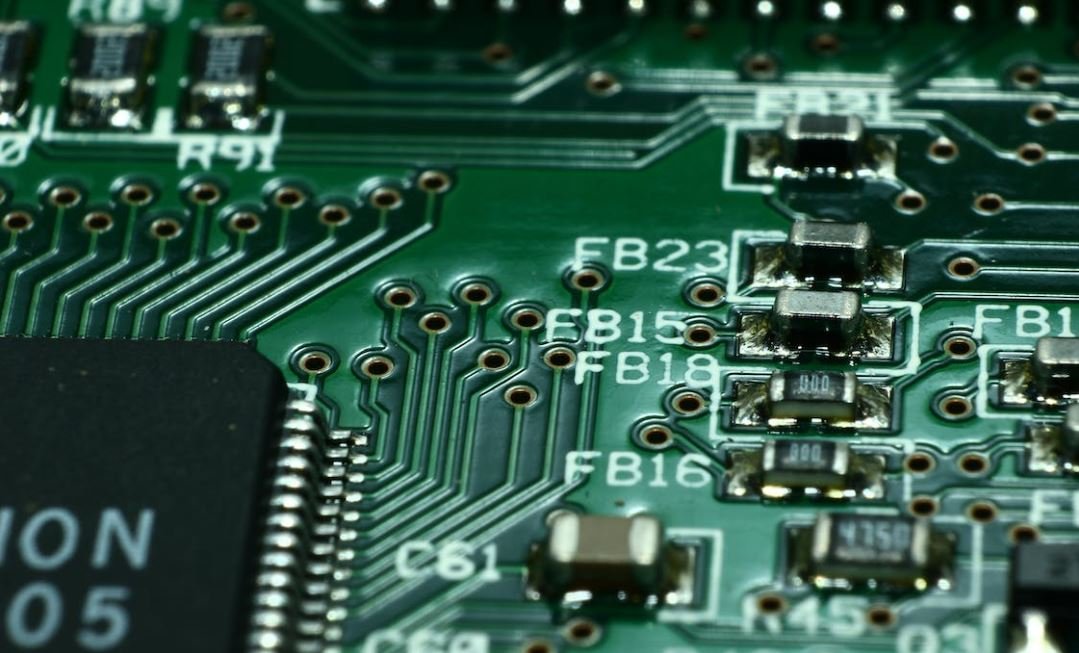Deepfake Define
In today’s digital age, the term “deepfake” is becoming increasingly prevalent. Deepfakes are synthetic media, typically videos or images, that are created or altered using artificial intelligence (AI) technology. These manipulated media can be incredibly realistic, making it difficult to distinguish between real and fake content.
Key Takeaways
- Deepfakes are realistic AI-generated media that can deceive viewers.
- They have the potential to spread misinformation and undermine trust.
- Deepfake detection techniques are being developed, but the technology continues to evolve.
- Regulations and awareness campaigns are necessary to address the ethical and societal implications of deepfakes.
Understanding Deepfakes
Deepfakes are created using deep learning techniques, especially using a type of AI called Generative Adversarial Networks (GANs). GANs consist of two neural networks: a generator network that creates the fake content and a discriminator network that tries to differentiate between real and fake content. Through iterative training, these networks improve their abilities to generate realistic deepfakes.
Manipulated media created through deepfakes can be so convincing that even experts may struggle to identify them.
Implications and Concerns
The rise of deepfakes raises several concerns. They can be used to spread misinformation, fabricate evidence, or manipulate public opinion. Deepfakes can target individuals by superimposing their faces onto explicit content, leading to potential harm or damage to reputations. Additionally, they pose threats to national security as they could be used to impersonate political leaders or carry out various cybercrimes.
Deepfake Detection
As deepfake technology advances, so do the techniques used to detect them. Currently, detection methods include analyzing visual artifacts, examining inconsistencies, and leveraging forensic methods. Researchers and tech companies are actively developing algorithms and solutions to combat the spread of deepfakes. However, it is a constant cat-and-mouse game, as deepfake creators adapt and develop new ways to evade detection.
Identifying deepfakes requires a combination of human expertise and technological advancements.
The Ethical Responsibility
Addressing the ethical implications of deepfake technology is crucial. Governments, tech companies, and society as a whole must work together to establish regulations and guidelines regarding the creation, sharing, and use of deepfakes. Awareness campaigns can also play a significant role in educating the public about the existence and potential risks of deepfakes, promoting critical thinking, and encouraging media literacy.
Table 1: Notable Deepfake Cases
| Date | Case |
|---|---|
| June 2019 | A deepfake video of Facebook CEO Mark Zuckerberg surfaced on social media. |
| August 2019 | A deepfake video of Kim Kardashian was created to raise awareness about the dangers of deepfakes. |
| December 2019 | A deepfake video featuring Queen Elizabeth II was aired as part of a British television Christmas message. |
Table 2: Deepfake Detection Tools
| Tool | Description |
|---|---|
| Deeptrace | An AI-powered platform that detects and analyzes deepfake videos. |
| Sensity | A company that uses AI to identify and track deepfake content. |
| Microsoft Video Authenticator | A tool that detects deepfakes with the help of a deep neural network. |
The Future of Deepfakes
As deepfake technology evolves, staying ahead of its implications becomes increasingly challenging. It is crucial for researchers, developers, and policymakers to collaborate and continuously improve deepfake detection methods, as well as to establish legal frameworks around their creation and use. Building a resilient and trustworthy digital environment is essential to combat the dangers posed by deepfakes and ensure the integrity of media.
Table 3: Deepfake Statistics
| Year | Number of Detected Deepfakes |
|---|---|
| 2017 | Less than 10 |
| 2018 | Approximately 5,000 |
| 2019 | Over 14,000 |
Deepfakes have already had significant social, political, and cultural impacts, and their influence is likely to grow. To protect ourselves and society, it is crucial that we continue to research, educate, and take necessary actions to address the challenges posed by this emerging technology.

Common Misconceptions
Deepfake Technology is Only Used for Harmful Purposes
One common misconception about deepfake technology is that it is solely used for malicious purposes, such as creating fake news or spreading misinformation. However, while deepfakes can be misused, they also have various positive applications that are often overlooked.
- Deepfake technology can be utilized in the entertainment industry to create realistic virtual actors and enhance visual effects.
- It can be used in education and training to simulate real-life scenarios for better learning experiences.
- Researchers can employ deepfakes to improve facial recognition systems and develop better anti-spoofing techniques.
Deepfakes are Always Easy to Spot
Another misconception is that deepfakes are always easily distinguishable from authentic content. While some deepfake creations can be seamlessly generated, there are several indicators and methods to detect them.
- Artifacts or unusual glitches in the video can be a hint of a deepfake.
- Inconsistent facial movements, mismatched lip-syncing, or unnatural expressions might indicate manipulation.
- Comparing suspicious videos with known authentic content can help identify discrepancies and inconsistencies.
Deepfake Technology Can Perfectly Replicate Anyone’s Voice or Appearance
There is a common belief that deepfake technology is capable of flawlessly replicating anyone’s voice or appearance. Although deepfakes have advanced significantly, achieving absolute perfection remains a challenge.
- Subtle imperfections like slight blurs, distortions, or artifacts may still be present in high-quality deepfakes.
- Replicating complex physical mannerisms or expressions accurately can be difficult to achieve.
- Creating deepfake voices with perfect intonation and vocal nuances is still a complex task.
Deepfakes are Mainly Used to Target Celebrities or Public Figures
Many people believe that deepfakes are primarily created to target celebrities or public figures. While they may indeed be targeted due to their high visibility, deepfakes can be created for a variety of reasons.
- Individuals may use deepfakes for personal entertainment, such as swapping faces in videos or creating fictional scenarios.
- Deepfakes can be used in political campaigns to spread false information or manipulate public perception.
- Cybercriminals can use deepfakes for identity theft or to defraud unsuspecting individuals.
Deepfakes are an Unsolvable Problem
Lastly, it is incorrect to assume that deepfakes are an unsolvable issue. While it poses considerable challenges, ongoing research and advancements in technology are actively addressing the problem.
- Researchers are developing robust detection algorithms and tools to identify deepfakes with greater accuracy.
- Legislations and policies are being considered to regulate the creation and dissemination of deepfakes.
- Education and awareness campaigns are aimed to teach individuals how to identify and critically analyze questionable media content.

Introduction
In recent years, the rise of deepfake technology has generated both excitement and concern. Deepfakes are highly realistic synthetic media that use artificial intelligence to manipulate or generate audiovisual content. They have applications in entertainment, politics, and even criminal activities. This article presents 10 captivating tables that highlight various aspects of deepfakes, providing interesting insights into this fascinating yet controversial technology.
1. Top Deepfake Applications in Entertainment
This table showcases the most prominent applications of deepfakes in the entertainment industry. From seamlessly replacing actors in movies to creating digital versions of deceased musicians for concerts, deepfakes have revolutionized the way we experience media.
| Application | Description |
|---|---|
| Actor Replacement | Enables swapping of actors’ faces with computer-generated ones. |
| Imitation Performances | Allows modern artists to digitally perform alongside their idols. |
| Musical Resurrections | Brings back legendary musicians for new performances. |
2. Top Deepfake Controversies
This table highlights some of the most contentious controversies related to deepfakes. These incidents have sparked debates around privacy, security, and the potential misuse of this technology.
| Controversy | Description |
|---|---|
| Non-consensual Pornography | Deepfake technology has been used to create explicit videos without consent. |
| Political Manipulation | Deepfakes have been used to spread false information, affecting electoral processes. |
| Identity Theft | Criminals have utilized deepfakes to impersonate individuals for illicit purposes. |
3. Deepfake Detection Techniques
This table outlines various methods employed to detect deepfake media, providing insights into the ongoing efforts to combat potential misuse of this technology.
| Detection Technique | Description |
|---|---|
| Visual Artifacts Analysis | Examining inconsistencies or anomalies in the visual content of a deepfake. |
| Voice Analysis | Identifying discrepancies and abnormalities in the synthesized audio of deepfakes. |
| Metadata Evaluation | Analyzing hidden information within the file to determine its authenticity. |
4. Deepfake Impact on Journalism
This table showcases the potential impact of deepfakes on the field of journalism. From ethical dilemmas to misinformation, deepfakes pose significant challenges for journalists and media organizations.
| Impact | Description |
|---|---|
| False News Propagation | Deepfakes can be used to spread fabricated news stories or manipulated interviews. |
| Erosion of Trust | Increased prevalence of deepfakes can diminish public trust in media authenticity. |
| Ethical Dilemmas | Journalists face challenges regarding verification and protection of sources. |
5. Deepfake Regulations Worldwide
This table provides an overview of the current regulatory landscape regarding deepfake technology across different countries, demonstrating the varied approaches taken by governments.
| Country | Regulatory Measures |
|---|---|
| United States | Focused on preventing deepfake-related election interference. |
| China | Implemented strict laws against malicious deepfake creation. |
| European Union | Proposed regulations to combat deepfake dissemination. |
6. Deepfake Technology Evolution
This table explores the evolution of deepfake technology, showcasing its advancements from basic image manipulations to highly convincing video and audio synthesis.
| Generation | Description |
|---|---|
| First Generation | Primarily focused on face-swapping limited to static images. |
| Second Generation | Enabled face-swapping in videos, though results were often imperfect. |
| Third Generation | Utilizes advanced AI algorithms for near-perfect and highly realistic deepfakes. |
7. Celebrity Deepfake Impact
This table delves into the impact of deepfakes on celebrities, exploring the potential consequences on their reputation, privacy, and overall public perception.
| Impact | Description |
|---|---|
| Defamation | Deepfakes can falsely portray celebrities engaging in illegal or scandalous activities. |
| Invasion of Privacy | Celebrities may struggle with the unauthorized use of their likeness in intimate contexts. |
| Doubtful Authenticity | Increased prevalence of deepfakes may lead to skepticism surrounding real celebrity appearances. |
8. Deepfake Forensics
This table explores the field of deepfake forensics, highlighting emerging techniques and technologies aimed at identifying manipulated digital content.
| Forensic Technique | Description |
|---|---|
| Micro-Expressions Analysis | Studying subtle facial expressions that are difficult to replicate in deepfake videos. |
| Emotional Synchronization | Measuring the emotional consistency between the synthesized facial movements and audio. |
| Machine Learning Algorithms | Training AI models to identify patterns indicative of deepfake manipulation. |
9. Deepfake Ethics
This table explores the ethical considerations surrounding deepfake technology, highlighting the complex dilemmas faced by individuals, organizations, and society as a whole.
| Ethical Dilemma | Description |
|---|---|
| Informed Consent | Deepfakes raise concerns regarding obtaining consent for using someone’s likeness. |
| Misrepresentation | Using deepfakes for impersonation undermines trust and authenticity. |
| Real vs. Synthetic Content | Deepfakes blur the line between real and synthetic, questioning our perception of reality. |
10. Deepfake Impact on Politics
This table examines the potential impact of deepfakes on political landscapes, showcasing how this technology can manipulate public perception and sow discord.
| Impact | Description |
|---|---|
| Election Manipulation | Deepfakes can be used to spread misinformation targeting political candidates. |
| Public Trust Erosion | Increase in deepfake production may erode trust in political institutions and figures. |
| Polarization and Disinformation | Deepfakes can contribute to the spread of misinformation and exacerbate social divisions. |
Conclusion
Deepfakes, while offering exciting possibilities, also present significant challenges across various domains. From the vast applications in entertainment to the controversies related to privacy and trust, the tables presented in this article reveal the multifaceted nature of deepfake technology. As deepfakes continue to evolve, it becomes crucial to adopt effective detection techniques, establish regulations, and engage in ethical discussions to ensure responsible and beneficial use of this powerful technology.
Frequently Asked Questions
Deepfake Define
Questions
-
What is a deepfake?
-
How are deepfakes created?
-
What are the potential uses of deepfakes?
-
What are the risks associated with deepfakes?
-
Can deepfakes be detected?
-
How can individuals protect themselves from deepfake threats?
-
Are there any laws against deepfake creation or distribution?
-
What efforts are being made to combat deepfakes?
-
Can deepfake technology be used for positive purposes?
-
Is it possible to remove a deepfake once it has been created?
Answers
-
What is a deepfake?
A deepfake refers to a manipulated video or audio content created using artificial intelligence technology, typically deep learning algorithms. It involves superimposing or replacing someone’s face or voice in a video or audio recording, making it appear as if they said or did something they never actually did. -
How are deepfakes created?
Deepfakes are created using deep learning algorithms, particularly generative adversarial networks (GANs). GANs consist of two neural networks, a generator and a discriminator. The generator creates synthetic content, such as fake videos, while the discriminator evaluates the quality of the generated content. Through an iterative training process, both networks learn and improve until the generated deepfakes become highly convincing. -
What are the potential uses of deepfakes?
Deepfakes can have both positive and negative applications. On the positive side, they can be used for entertainment and creative purposes, such as in movies or digital art. However, there are concerns about malicious uses, such as spreading fake news, cyberbullying, or even manipulating political figures’ statements. -
What are the risks associated with deepfakes?
Deepfakes can pose significant risks, particularly in terms of misinformation and social manipulation. They can be used to deceive, defame, or blackmail individuals by making them appear in compromising situations. Deepfakes also raise ethical concerns about privacy infringement and the potential to incite violence or damage reputations. -
Can deepfakes be detected?
Detecting deepfakes can be challenging as the technology keeps evolving. However, researchers and tech companies are developing various methods to detect and mitigate the impact of deepfakes. These techniques range from using computer vision algorithms to identify fake artifacts to leveraging forensic analysis tools and deepfake-specific detection models. -
How can individuals protect themselves from deepfake threats?
To protect themselves from deepfake threats, individuals can follow certain guidelines such as being cautious of the media they consume, verifying sources, and fact-checking information before believing or sharing it. They can also refrain from sharing personal information or sensitive content online and enable multi-factor authentication for their online accounts to minimize the risk of identity theft. -
Are there any laws against deepfake creation or distribution?
Legislation against deepfake creation and distribution varies across different jurisdictions. Some countries have specific laws regarding the creation and sharing of deepfake content, especially if it targets non-consenting individuals for malicious purposes. However, the legal landscape is still evolving, and addressing deepfake-related challenges often involves a combination of existing laws related to fraud, privacy, intellectual property, and defamation. -
What efforts are being made to combat deepfakes?
To combat deepfakes, various stakeholders, including tech companies, researchers, and policymakers, are working on multiple fronts. They are investing in research and development of detection technologies, enhancing media literacy and education to increase public awareness, and fostering international collaborations to share best practices and explore regulatory measures to address the risks associated with deepfakes. -
Can deepfake technology be used for positive purposes?
Yes, deepfake technology has positive potential in fields like entertainment, art, and education. It can be used to create engaging and realistic virtual characters or historical figures, enhance special effects in movies, and facilitate language learning through interactive virtual conversations. However, ethical considerations and responsible use of the technology are essential to prevent abuse or harm. -
Is it possible to remove a deepfake once it has been created?
Once a deepfake has been created and disseminated, it can be challenging to remove completely. However, depending on the platform or website hosting the content, it may be possible to report and request removal based on various policies and guidelines. Quick response and cooperation from online platforms, coupled with the use of advanced detection and removal techniques, can help in mitigating the spread and impact of deepfakes.




